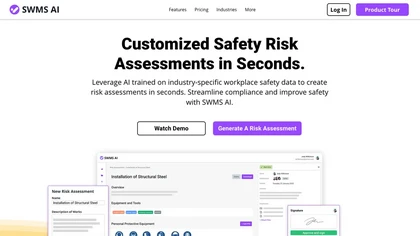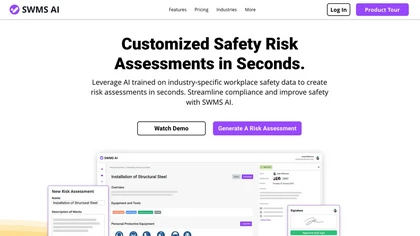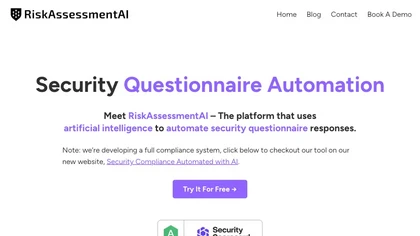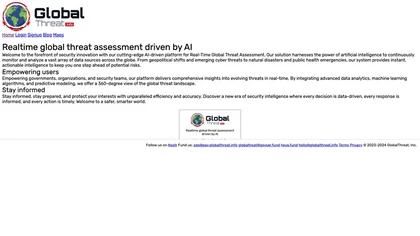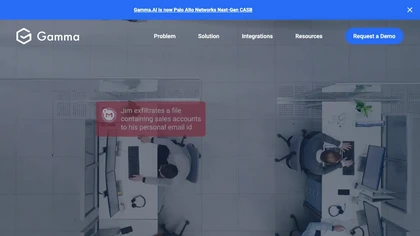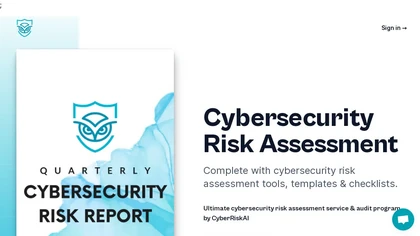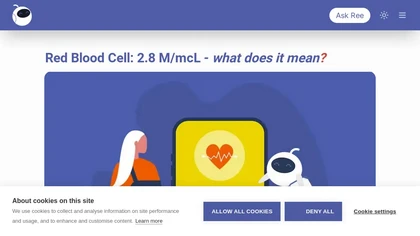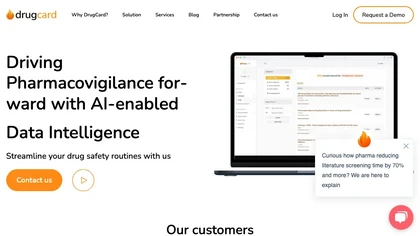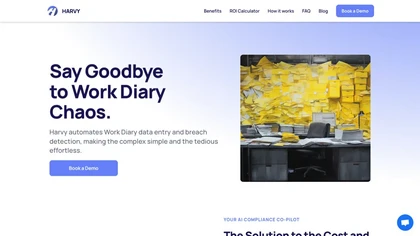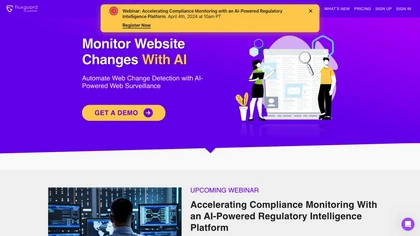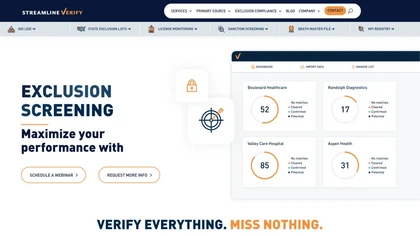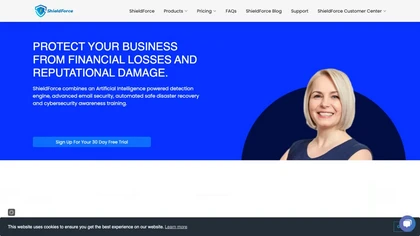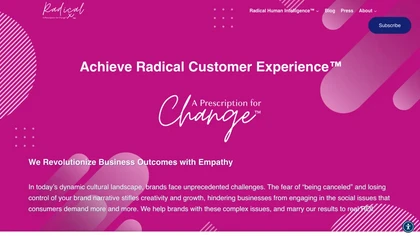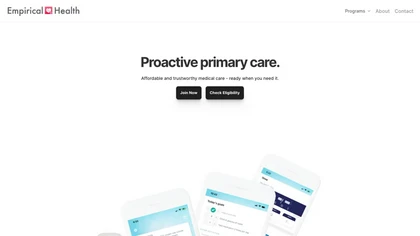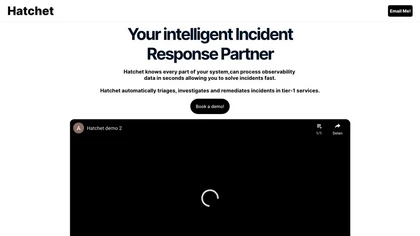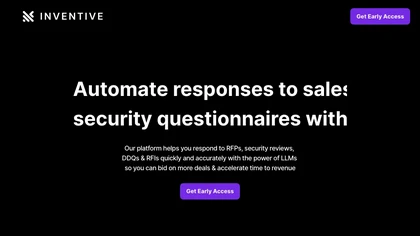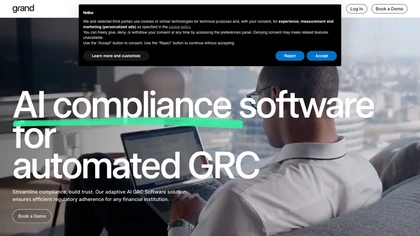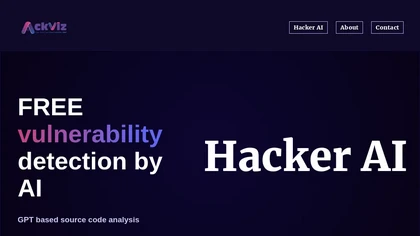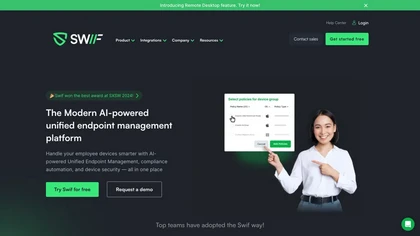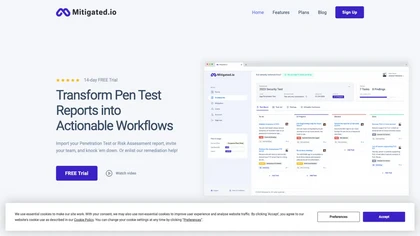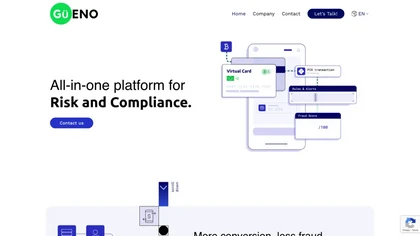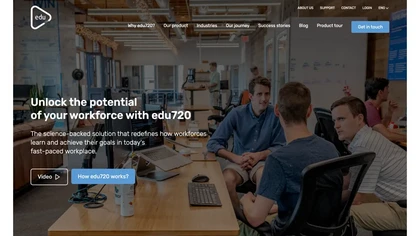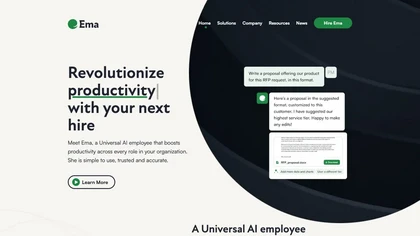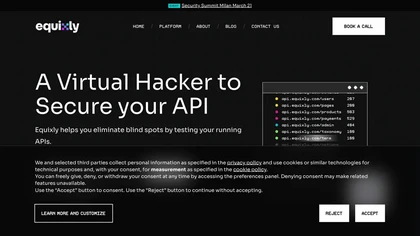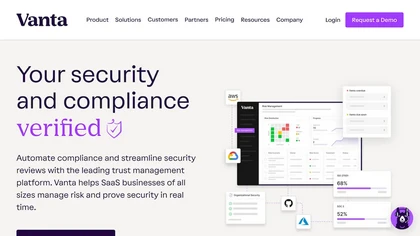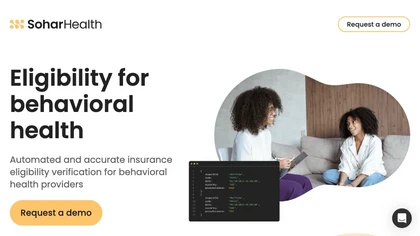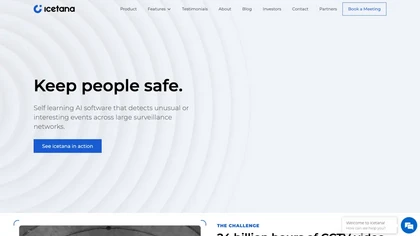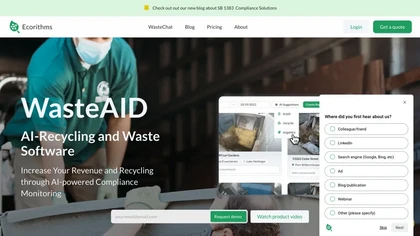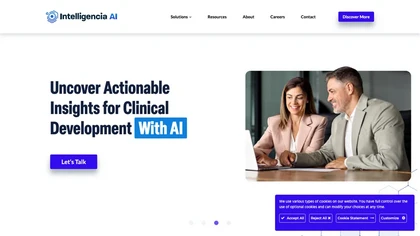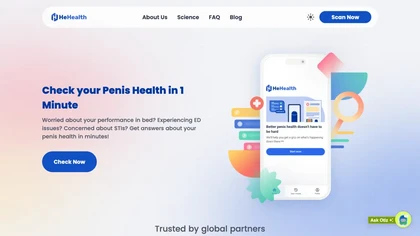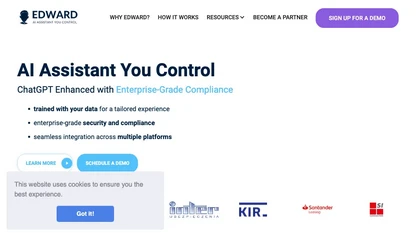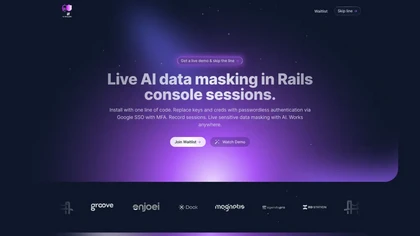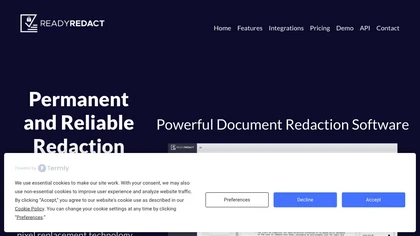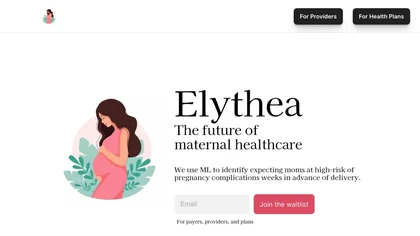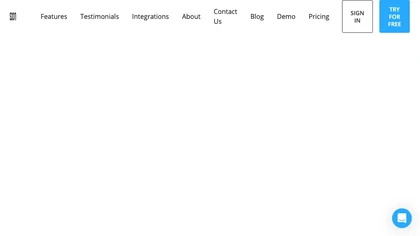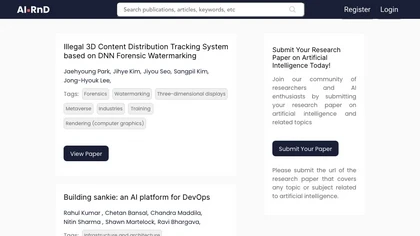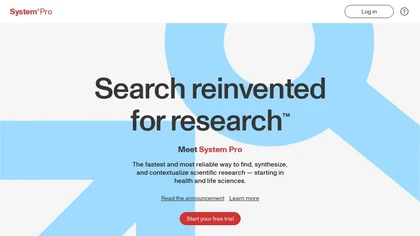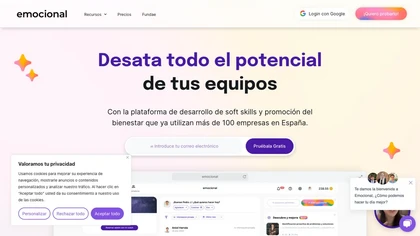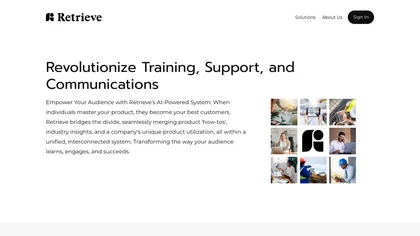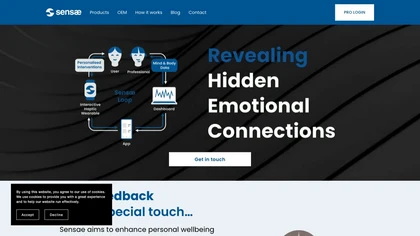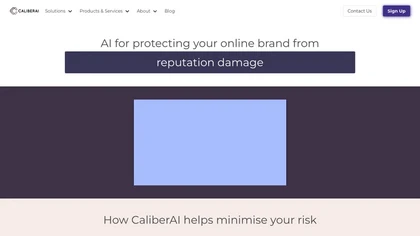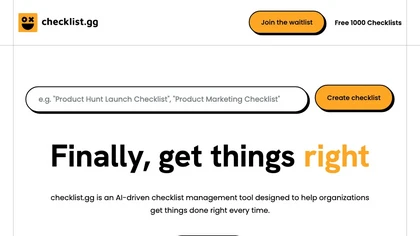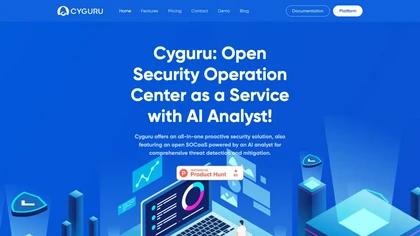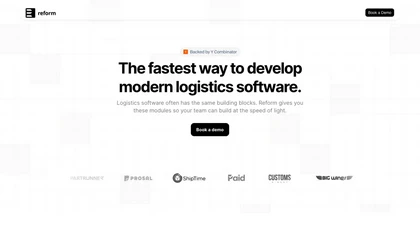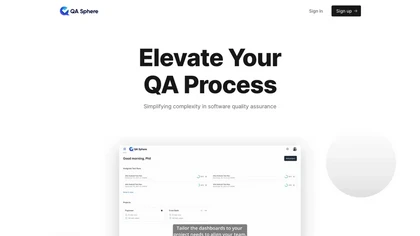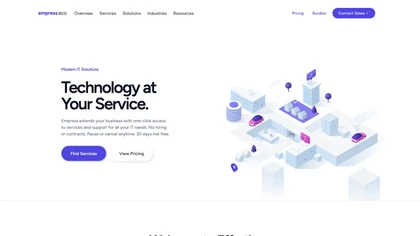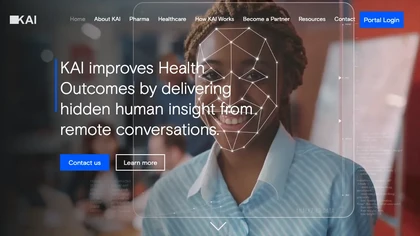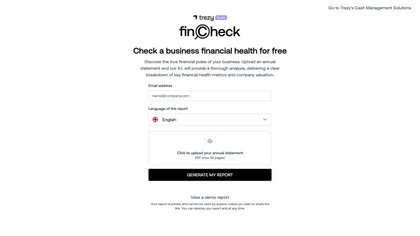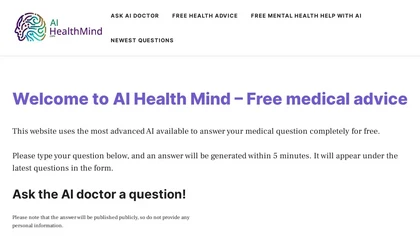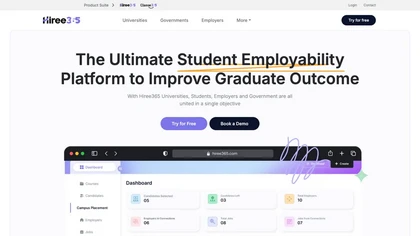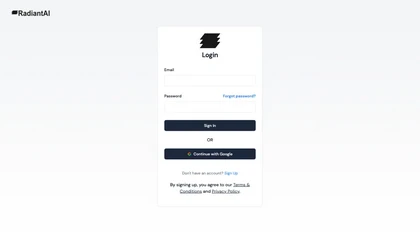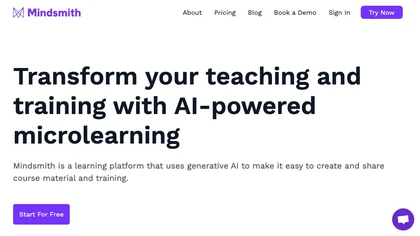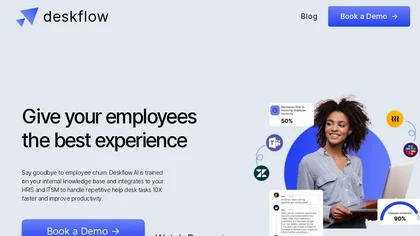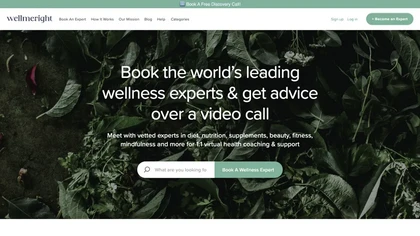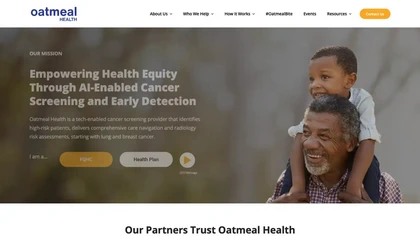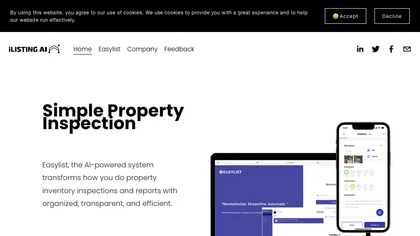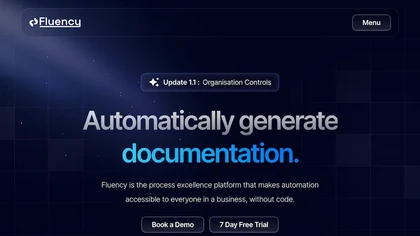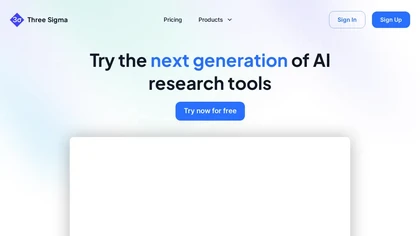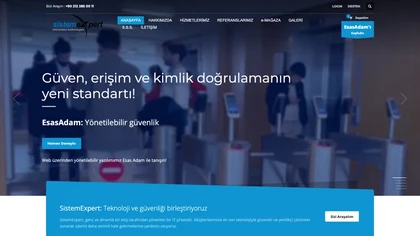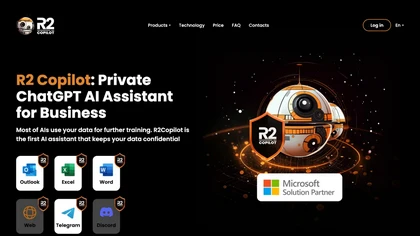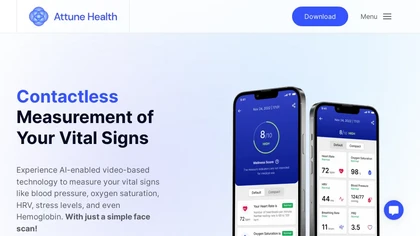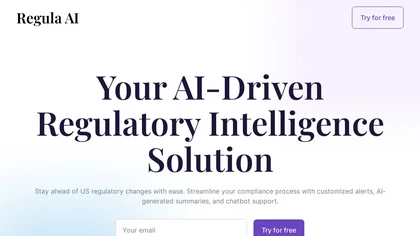AI use cases for Health and Safety
Generative AI can be applied in various applications for health and safety. Here are some examples to explore below for inspiration with AI tools to get you started with using AI in health and safety.
🛠️ 70 AI tools for Health and Safety
Explore a dynamic list of some of the most popular tools to get you started with various AI use cases and applications for Health and Safety to streamline your workflows and productivity today.
SWMS AI features
- Tailored risk assessments generation
- Customizable safety policies
- Personalized document generation
- Integration of AI assistant for safety information
- Streamlining compliance processes
SWMS features
- AI risk assessments
- Safety Co-Pilot integration
- Customization options
- Quickly generate safe work sequences
- AI-powered safety recommendations
RiskAssessmentAI features
- Automate security questionnaire responses
- Scan documentation
- Build knowledge base
- Support various assessment formats
- Collaboration between teams
Inc. features
- Real-time global threat assessment
- Continuous monitoring and analysis of vast data sources
- Actionable intelligence delivery
- Comprehensive insights into evolving threats
- Integration of advanced data analytics, machine learning, and predictive modeling
Gamma.ai
4.8Gamma.ai features
- Continuously monitors employees
- Notifies of security mistakes
Cyberriskai features
- Cybersecurity risk assessment
- Automated quarterly risk audits
- Nist cybersecurity audit framework
- Comprehensive assessment report
- Employee cybersecurity practices
Ree AI features
- Explain medical reports
- Recommend supplements
- Check drug interactions
🔥
Create your account, save tools & get personal recommendations
Receive a weekly digest of our handpicked top tools.
Unsubscribe anytime
DrugCard features
- Automates drug safety routines
- Multiple languages and countries
- High-performance screening
Harvy features
- Automated work diary data entry
- Breach detection
- AI-driven automation for reducing human error risks
- Fast notice-to-produce reporting
- Online access to work diary sheets for up to 3 years
Fluxguard features
- Web Change Monitoring using generative AI
- Screenshots and pixel change detection
- Text change detection and network analysis
- Real-time or scheduled report dispatch
- Email reports with screenshots and text changes
Streamline Verify features
- Screening against various databases including OIG LEIE, state exclusion lists, license monitoring, sanction screening, death master file, and NPI registry
- One-stop portal for quick identification and resolution of compliance screening issues
- API integration for future compliance needs
- Enhances efficiency in executing exclusion screening and credential management
- Trusted by over 10,000 establishments
Phishr features
- Interactive training
- Shows users what they missed in the email
- Preview of user experience when getting caught out
- Lifetime access for $1,400
- Training to identify phishing emails
PrivacyQuest features
- Record processing activities management
- Incident/breach management
- Individual rights management
- Consent management
- Automated document generation
ShieldForce features
- Advanced email security system
- Automated disaster recovery capabilities
- Cybersecurity awareness training
- AI-based antimalware, antivirus, endpoint protection
- Data storage in Acronis datacenter and third-party cloud providers
Radical Human Intelligence™ features
- 3 R methodology support
- Deep stakeholder understanding
- Human level connections
- Informed decision making
- Fostering trust and collaboration
Empirical Health features
- Proactive primary care
- Integration of consumer wearables for health monitoring
- Consultation with doctors via mobile app
- Personalized care plans
- Compatibility with major insurance providers
Hatchet features
- Automatically triages, investigates, and remediates incidents for tier-1 services
- Offers self-hosted deployments with robust security features like permissions, audit trails, SSO, and version control
- Ingests logs, codebases, and knowledge hubs to enable faster incident resolutions
- Proactively reads logs, communication channels, and code to suggest fixes for efficient incident triage and investigation
- Optimizes workflows by automating incident handling tasks to help engineers resolve critical incidents swiftly
Inventive features
- Streamline rfis, rfqs, security reviews, rfps
- Generate reliable answers with ai
- Reduce reliance on subject matter experts
- Save substantial time and effort
- Up-to-date content
Grand features
- Automated GRC software
- Efficient regulatory adherence
- Compliance workflows automation
- Policy and regulatory news monitoring
- Insights into regulatory changes
Hacker AI
4.6Hacker AI features
- Source code scanning
- Security weakness identification
- Potential exploitation detection
- Hacker targeting prediction
- Malicious actor analysis
Swif features
- Unified device management compliance automation
- Remote desktop feature
- Automated device security, access, and compliance management
- Support for MacOS, Windows, and Linux platforms
- Integration with Vanta, Drata, and Secureframe for SOC2 certification processes
Mitigated.io features
- Transforms penetration test risk assessment reports into actionable workflows
- Leverages collaborative workspaces for task assignment and progress tracking
- Provides AI-enriched mitigation guidance for security vulnerabilities
- Supports easy import of assessment reports
- Enables users to enlist security mitigation services directly from the dashboard
AI-FraudGuard Ecommerce features
- Contactless conversion
- Fraud prevention
- Transaction monitoring
- Compliance processes automation
- Real-time monitoring
edu720 features
- AI-powered content
- Powerful analytics
- Nanolearning capabilities
- Mobile learning capabilities
- Support for various industries
Ema features
- Generative AI integration
- Emafusion™ model
- Data governance and security focus
- Integration with hundreds of enterprise apps
- Workflow automation across multiple applications
Equixly features
- Continuous scanning of APIs for security vulnerabilities
- Detection and fixing of security issues in development process
- Scalable API pentesting capabilities
- Mapping of attack surface and inventory of API landscapes
- Transparent compliance reporting model
Vanta features
- Automating security compliance processes
- Integration with over 300 security tools
- AI capabilities for accelerating security workflows
- Vendor risk management assistance
- Compliance with over 25 frameworks
Soharhealth features
- Automate insurance eligibility verification
- Streamline manual operations
- Improve team efficiency
- Reduce preventable claim denials
- Increase patient intake, conversion rates, and revenue
Icetana features
- Real-time event detection
- Trip & fall detection
- Fire detection
- People & vehicle counting
- Self-learning AI technology
WasteAID features
- Automatic route auditing
- Integration with existing systems
- Audit over 400k generators and 1m+ pickups
- Detect overflow incidents and identify contamination
- Tracking commercial account compliance
intelligencia.ai features
- Measuring the likelihood of success in drug development
- Identifying underlying drivers contributing to technical and regulatory risks
- Optimizing clinical trial design
- Standardizing risk evaluation processes
- Transparent and explainable AI features
Hehealth.ai features
- Doctor-validated sexual health answers
- Comprehensive scan summary with 90% accuracy in detecting over 10 penile diseases
- Global team of healthcare professionals providing information and recommendations
- 100% anonymized and encrypted health data
- Results ready in just one minute
Edward features
- Seamless integrations
- Data analysis from various business systems
- Tailored experiences
- Security and compliance
- Expand functions
Rails Guard features
- Live data masking for Rails console sessions
- Shielding Rails console access
- Passwordless authentication via Google SSO and MFA
- Automates employee onboarding and off-boarding
- Real-time sensitive data masking
ReadyRedact Document Redaction features
- Redacting
- Documents
- Privacy
- Data protection
- Compliance
- Gdpr
- Ccpa
- Lgpd
- Popi
- Hipaa
Elythea features
- Integration with ehr systems
- Personalized insights
- Early intervention
Soon Pulse features
- Pre-built pulses
- Natural language processing technology
- Kpi monitoring
- Trend analysis
- Mental health check-ins
Saas With AI features
- Image upload for analysis
- Object recognition
- Scene recognition
- Text recognition
- User-friendly interface
AI-RnD features
- Access
- Share
- Disseminate
- Promote
- Collaboration
System Pro features
- Synthesizing relevant scientific data
- Sifting through vast amounts of data
- Offering a faster and more reliable search experience
- Seamlessly exploring a wide range of topics
- Contextualizing research findings
hCaptcha features
- Comprehensive security platform
- Instant detection and deterrence of human and automated threats
- Easy deployment with universal support
- Advanced security measures against various threats
- Privacy and compliance features to meet global standards
Emocional features
- Personality evaluation
- Soft skills evaluation
- Well-being assessment
- Personalized improvement plans
- Access to digital tools like Eva AI
retrieve.com features
- Unified system for merging product how-tos, industry insights, and product utilization
- Streamlining access to knowledge from diverse sources
- Bridging and uniting information streams into an easy-to-use system
- Optimizing communication and knowledge distribution across all devices
- Empowering audience with AI-powered training, support, and communications tools
Sensae Loop features
- AI-driven analytics
- Haptic biofeedback
- Physiological and emotional state monitoring
- Stress assessment
- Modular and customizable solutions
Verificient features
- AI-powered tools for online identity verification and monitoring
- Proctortrack for secure remote proctoring
- Biometrics, computer vision, and machine learning capabilities
- Continuous identity verification and remote monitoring
- Live proctoring with AI and automated remote proctoring
E-label.io features
- Generate e-labels with dynamic QR codes
- Upload nutritional information, ingredients, and lab results
- Customize stored data and attach QR code to wine labels
- Automatic translation support for EU languages
- Integration with ERP systems and web stores
CaliberAI features
- Online article evaluator
- Real-time browser extension
- CMS integration
- Content scanning and risk detection
- AI technology with customizable API thresholds
checklist.gg features
- Checklist management
- Task management
- Workflow management
- Real-time collaboration
- Integration with existing tools
Cyguru features
- Cloud-based AI security operation center (SOC)
- AI-powered attack detection
- Continuous monitoring for vulnerabilities and misconfigurations
- Compliance with essential security standards (GDPR, PCI DSS, NIST)
- ML and AI detection capabilities for identifying anomalies and suspicious activities
Reform features
- Modular building blocks for customized solutions
- State-of-the-art multimodal AI models for logistics documentation
- Automation of data capture for various documents
- Seamless integration with universal transportation management systems (TMS) through a universal API
- Embeddable customer dashboards for real-time data insights
QA Sphere features
- Digital checklist for managing tests
- Building a library of test cases
- Planning tests efficiently
- Organized test case library
- Integration with issue trackers
empress.eco features
- AI-powered automation
- On-demand outsourcing solutions
- Software integrations
- Helpdesk services
- Industry-specific solutions
Kai features
- Conversation
- Remote
- Delivering
- Hidden
- Human
- Insight
- Health
- Outcomes
FinCheck by Trezy features
- Financial health assessment
- Annual statements analysis
- Multilingual reports
- Privacy control
- Security features
AI Health Mind features
- Generate medical advice
- Answer medical questions
- Powered by cutting-edge technology
- Use of reliable medical databases
- Easy to use
Hiree365 features
- Comprehensive platform for students, universities, employers, and governments
- 360° approach to graduate employment
- AI-powered tool for universities to manage recruitments
- AI-powered job screening and candidate assessment technology for employers
- Facilitates seamless connections between employers and universities
RadiantAI features
- Seamless login process
- Comprehensive database
- Streamlining search for medical references
- User-friendly interface
- Advanced search capabilities
MindSmith features
- Course authoring
- Eliminating writer's block
- Tailoring engaging learning experiences
- Seamless sharing options
- Safety training
- Compliance training
Deskflow features
- 10x faster handling of repetitive help desk tasks
- 90% reduction in employee communication time
- 50% reduction in time required to address employee issues
- Decrease in time spent by employees accessing crucial information
- Automation of ticket creation and assignment
Hexowatch features
- Detects visual changes
- Monitors content changes
- Alerts users about keyword changes
- Monitors technology stack changes
- Offers customizable monitoring options
Well Me Right features
- AI matching and Health Coach capabilities
- Personalized coaching
- Dietary tracking, nutritional guidance
- Guided meditation sessions
- Adaptive health partner
Oatmeal Health features
- AI-powered cancer screening tool
- Early detection focus
- Identification and screening of high-risk cancer patients
- Comprehensive care navigation and risk assessments
- Collaboration with healthcare providers and health plans
Easylist features
- Automates property reporting
- Verifies inventory
- Documents claims
- Elevates processes
- Produces clear and cloud-based reports
Fluency.com features
- Automated Process Documentation
- Process Insights
- AI Assistant
- Automations
- Audit View
Three Sigma features
- Advanced search technology
- Imagine assistant
- Chatgpt plugin
sistemexpert.com features
- Facial recognition technology
- Card access system
- Fingerprint recognition system
- Turnstile access control
- Camera surveillance
R2 Copilot features
- Data privacy focus
- Secure infrastructure integration
- Task assistance (email replies, data analysis, drafting)
- Beneficial for professionals from various sectors
- Emphasis on data security and privacy compliance
CYBER AI features
- Upload security reports
- Understand security reports
- Unlock data breach reports
- Guide through step-by-step threat hunting process
- Uncover potential cybersecurity threats
Attune health features
- Vital sign measurement
- Contactless experience
- Real-time measurements
- Wellness tracking
- Corporate wellness
Regula.ai features
- Provides customized alerts
- Generates ai-summaries
- Natural language query support
- Simplifies compliance
- Helps smbs stay informed about regulatory changes
